Sora, founded by the Volsci on the banks of the Liri River among the Valleys of Liri, Comino and Roveto, boasts a millennial history, testified by the remains of San Casto and Cassio Castle, or Rocca Sorella, a pre-Roman fortress in defence of the Kingdom of Naples.
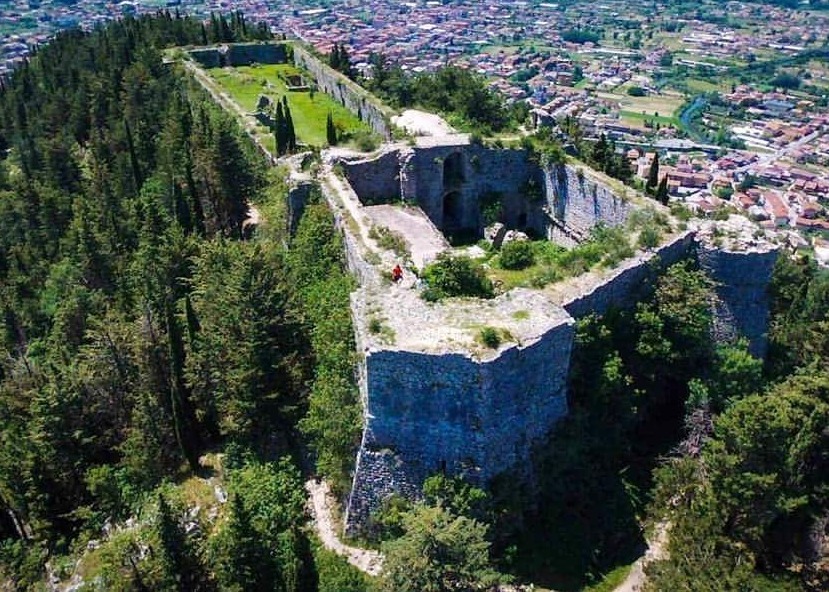
Castle of San Casto and Cassio or Rocca Sorella – www.comune.sora.fr.it
First Volscian, then Roman and finally Lombard, it became a noble residence only in 1520, when it hosted the Cantelmo, Della Rovere, Boncompagni and Borgia families. The building stands on Colle San Casto, above the pre-existing ruins of the Roman Castle, which can still be partly seen in the basement. This Natural Monument, a splendid terrace overlooking the town of Sora, can be reached on foot through some CAI paths.
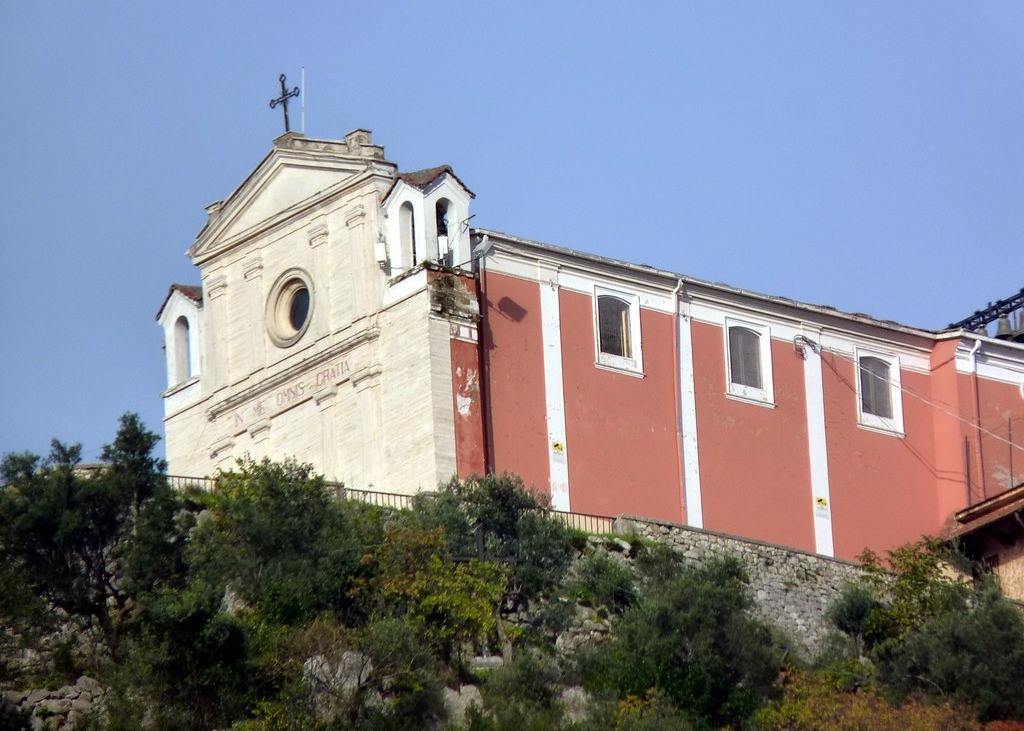
The Church of the Madonna delle Grazie – www.comune.sora.fr.it
In 1400, the Aragonese Tower was incorporated into the Cathedral of Santa Maria delle Grazie for defensive purposes. The evocative torchlight procession along the slopes of the San Casto Hill celebrates the Marian month of May.
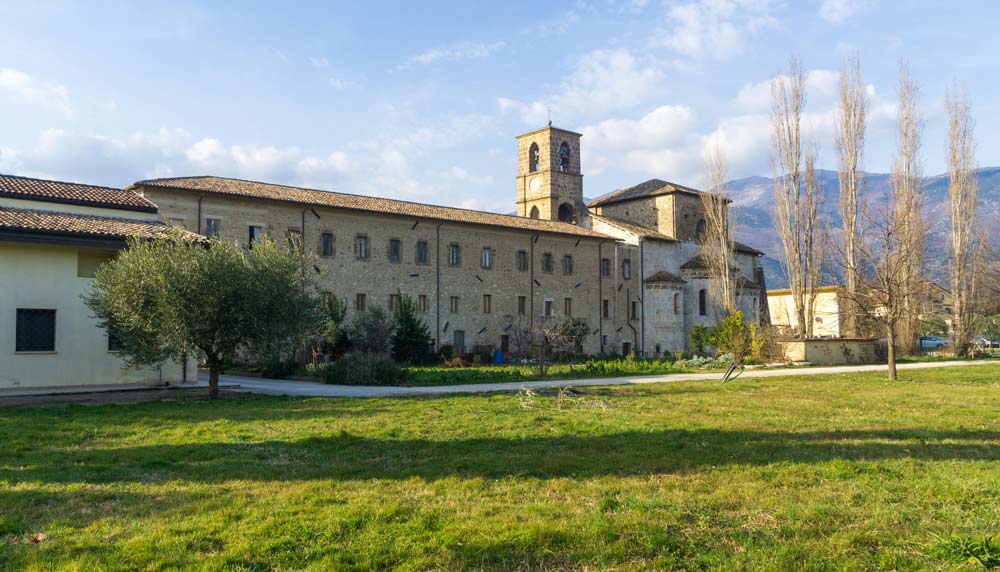
The Abbey of San Domenico
Also worth visiting are the rupestrian Sanctuary of the God Silvano and the Marmone Bridge, both from the second century. The latter can be found near the medieval Abbey of San Domenico, hosting the relics of the Saint and located on the Cammino di San Benedetto at the 12th Stage Casamari – Arpino.
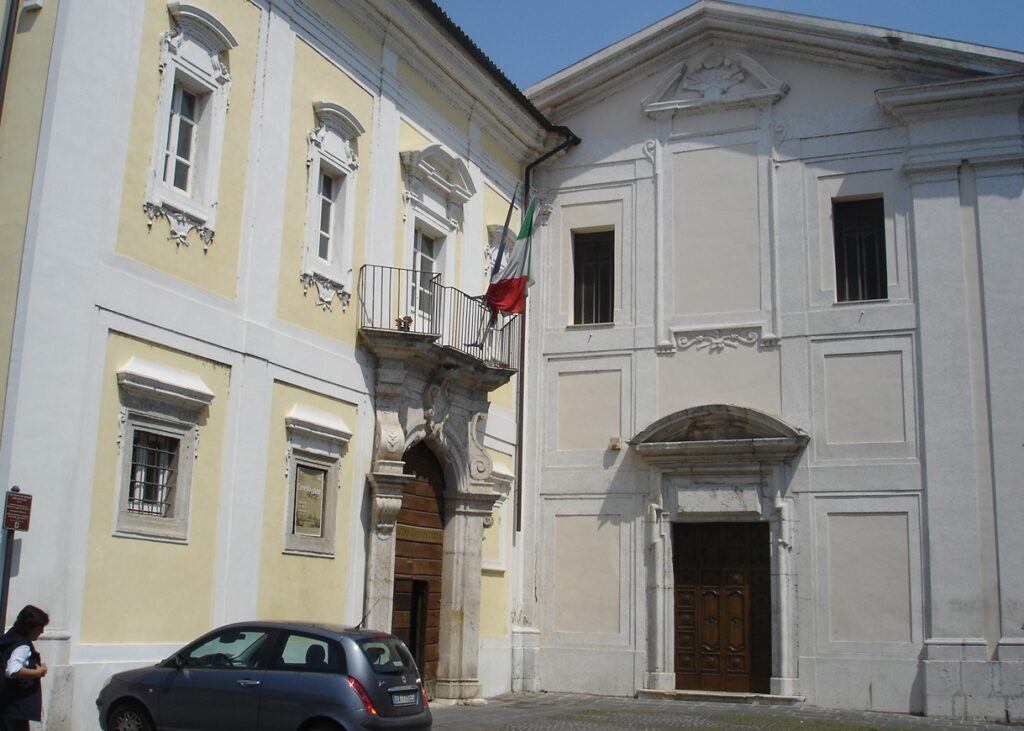
The Church and Convent of San Francesco – www.comune.sora.fr.it
On August 14th, a suggestive Procession starts from the medieval Cathedral of Santa Maria Assunta. Sixty porters carry the statue of the Assumption on the top of a 16-metre-high tower. The Convent and Church of San Francesco, annexed to a late Baroque Palace, were built at the beginning of the fourteenth century to commemorate the passage of the Saint in 1219 on his way to Egypt.
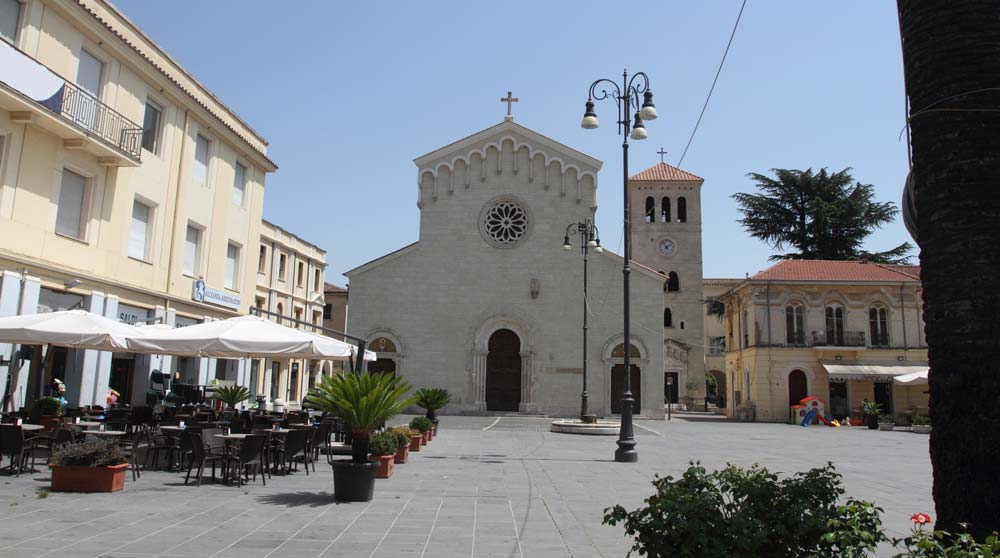
The Church of Santa Restituta
The Church of Santa Restituta, dedicated to the Patron Saint of Sora, was rebuilt in the early 1900s. According to legend, Santa Restituta intended to evangelize the inhabitants of Sora but was martyred on May 27, 275 AD. Her story is depicted on the church bronze portal by the sculptor Gismondi from Anagni. The single nave Church of Santa Maria degli Angeli, annexed to the Passionist Monastery in the Collacchio District, was once the seat of the Capuchins. It preserves on the main altar the painting of “Santa Maria degli Angeli” with Sora in the background, as it was in the early seventeenth century.
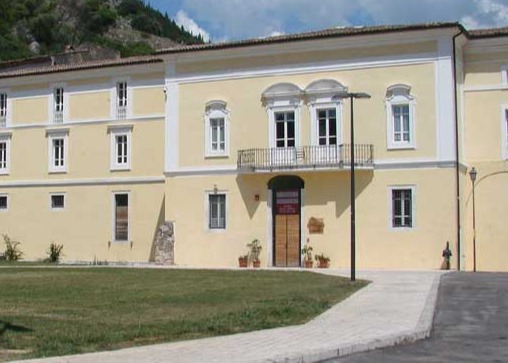
Civic Museum of the Media Valle del Liri – www.comune.sora.fr.it
The “Museo Civico della Media Valle del Liri” illustrates the history of Sora and its surroundings on three exhibition floors. The Museum is located inside the fourteenth-century former Convent of the Minor Conventual Friars, built on the foundations of a Roman villa. After the Unification of the Kingdom, the area of Sora was infested by the brigand gangs of King Francesco II, led by Luigi Alonzi, nicknamed “Chiavone”.
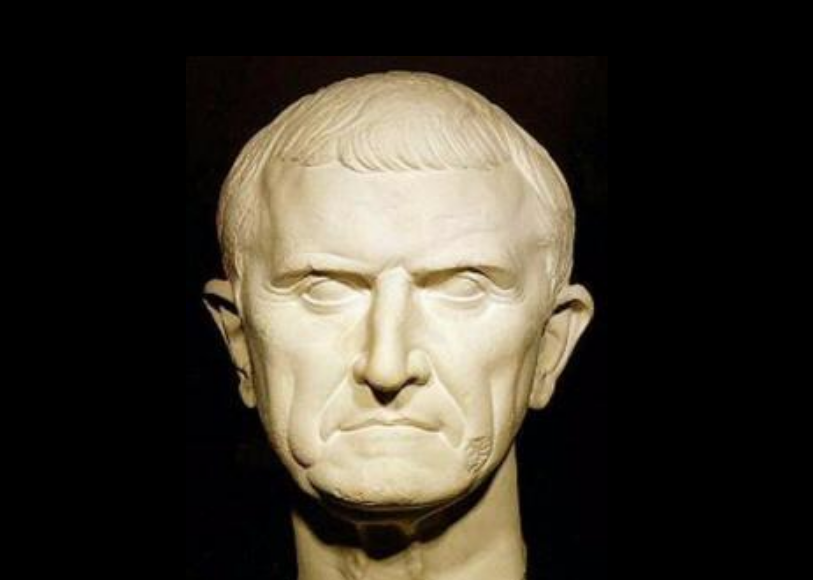
Marco Attilio Regolo – Marco Malvezzi @ www.comune.sora.fr.it
Among the famous natives of Sora, we find the Roman Consul Marco Attilio Regolo, born in 299 BC and known for his wars against the Carthaginians. Cesare Baronio, Cardinal of the Counter-Reformation, historian of the Church, and a disciple of San Filippo Neri, was also born in Sora on October 30, 1538. So did, centuries later, on July 14, 1894, Antonio Valente, architect, painter and set designer for cinema and theatre.
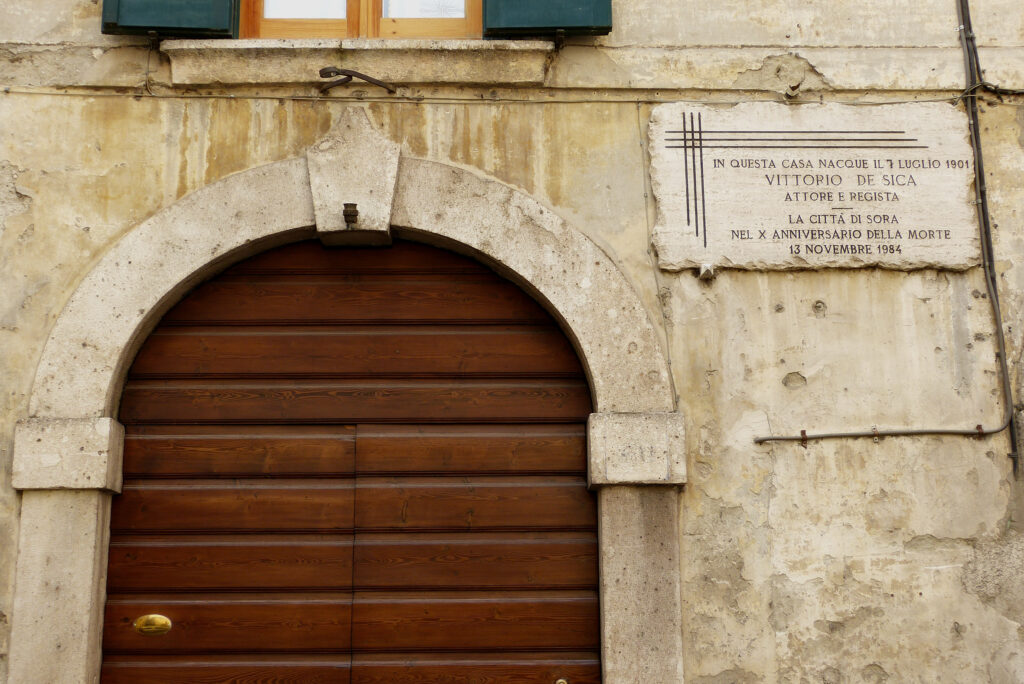
Plaque on the House of Vittorio De Sica in Sora – www.comune.sora.fr.it
Walking through the alleys of the historic centre, we come across the house in which, on July 7, 1901, Vittorio De Sica, the father of Italian Neorealism, was born. He was an actor and director of countless movies, such as “Ieri, oggi e domani”, with Sofia Loren and Marcello Mastroianni and “I due marescialli”, with Totò. With Zavattini he wrote the screenplay of “La Ciociara” (Two Women) and, in “Pane, amore e …”, he stunned the audience with the unforgettable Sophia Loren’s mambo.
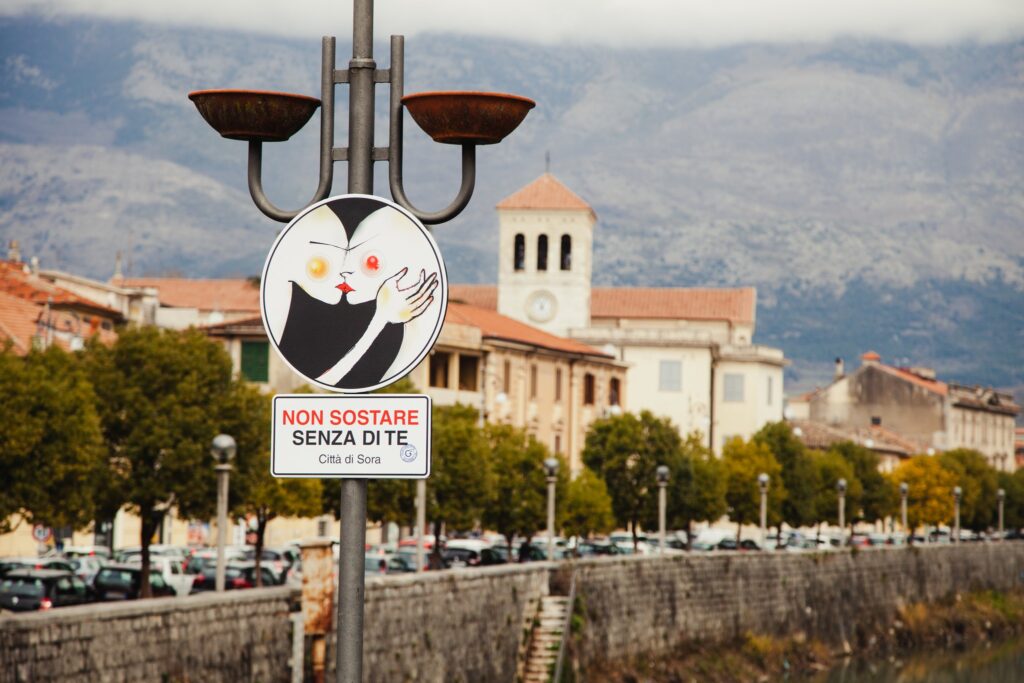
“Non SoStare senza di te” in Sora – Facebook @comunesora
“Non soStare senza di te”
On Valentine’s Day 2022, a sign was posted on the Riccardo Gulia Bridge in Sora, bearing the title of a work by the local artist Guido Gabriele, “Non soStare senza di te” *. The sign, in the black and white colours of the city coat of arms, portrays a kissing couple, with the man’s arm symbolizing the course of the Liri River, and seven red dots representing the seven bridges of this small town in Ciociaria.
*a play on words based on the translation non sostare (don’t stay) and non so stare (I can’t stay) without you.
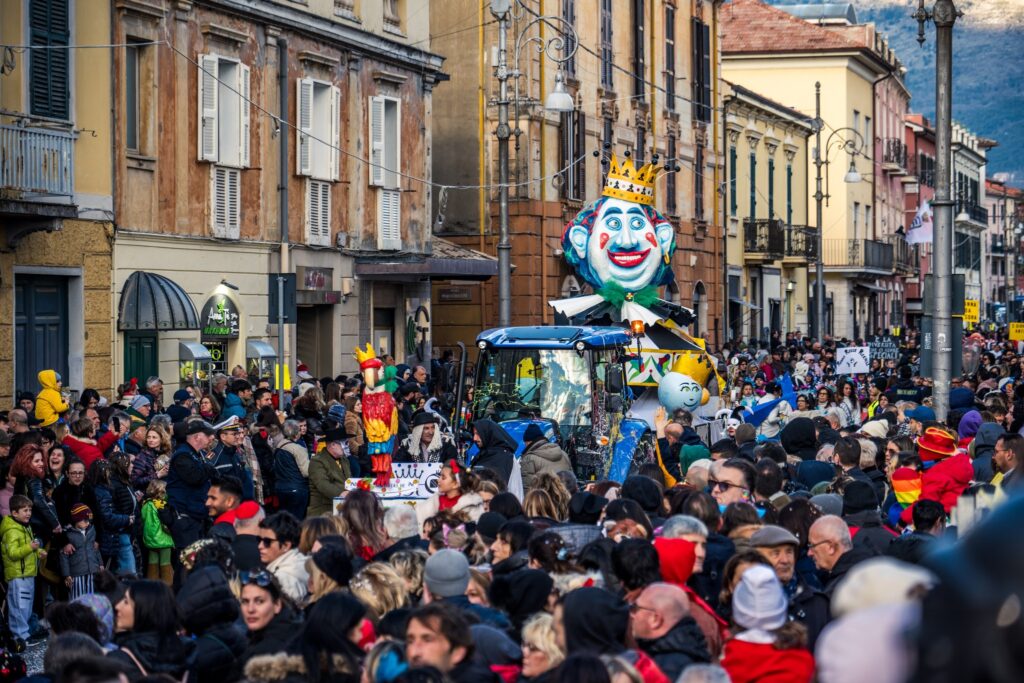
Historic Carnival of Liri
In 2024, the Historical “Carnevale del Liri” in Sora has been included by the “Ministero della Cultura – Dipartimento per le Attività Culturali Direzione Generale Spettacolo” in the List of the Historical Italian Carnivals, an intangible heritage rooted in the popular traditions of the territories. On the last Sunday of the Carnival, the eagerly awaited Carnival King, the typical mask from Sora, arrives, accompanied by dances, music and throwing of sweets. The most important event of the Carnival is the Great Parade of Shrove Tuesday, in which floats from the neighbouring villages also participate. The papier-mâché allegorical floats are created by experienced craftsmen from the various districts Sora.
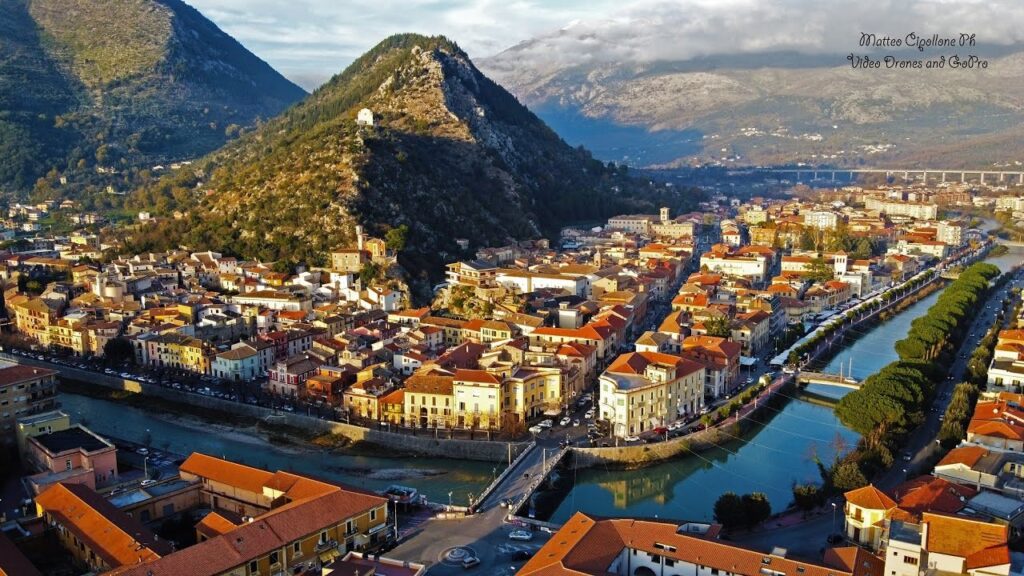
Sora – by Matteo Cipollone @ www.comune.sora.fr.it
In mid-October, the vintage cycle-tourist event “Ciclostorica dalle Cascate al Lago” takes place, starting and finishing at the Cascata Grande in Isola del Liri. The two routes, which cross the villages of the Middle Liri Valley and the Comino Valley, are named after two historical figures from Ciociaria, Marco Tullio Cicerone and Lucio Munazio Planco.
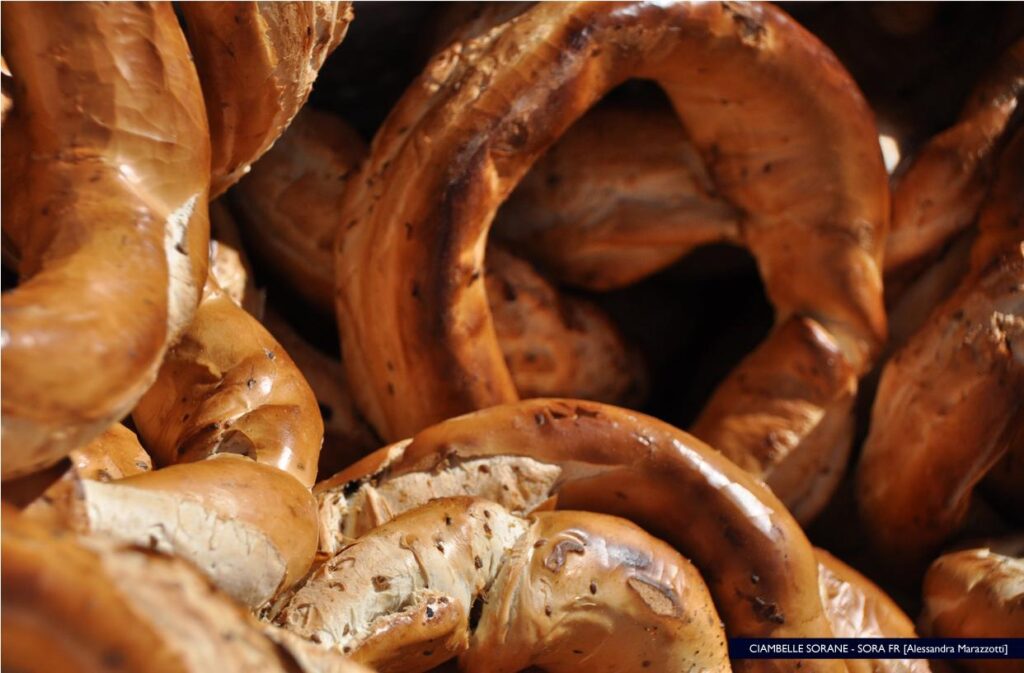
Ciammella Sorana
Among the local specialities, unmissable is the ciammella sorana, a doughnut with anise, crunchy outside and soft inside, to be accompanied by cold cuts, cheese, or vegetables.
